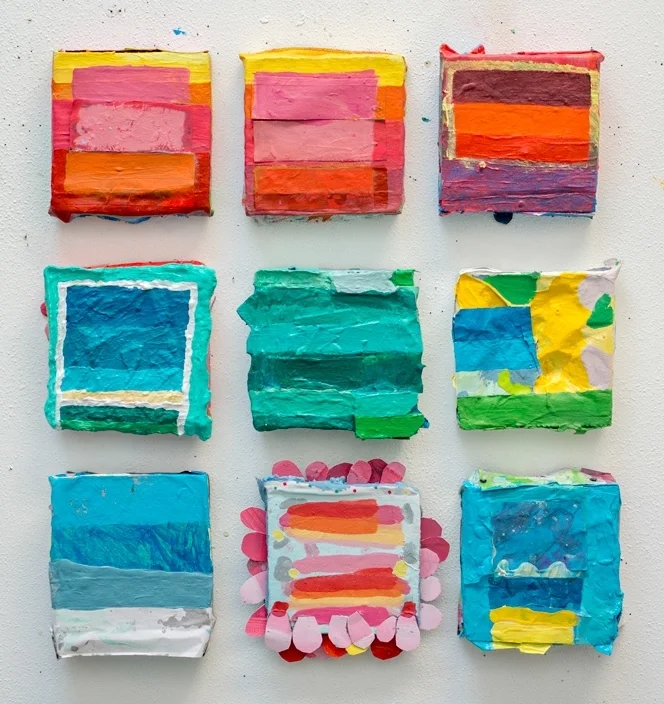Review | Jeremiah Palecek, Peter Ramon, and Amy Vensel
Review | Jeremiah Palecek, Peter Ramon, and Amy Vensel
Fred Giampietro Gallery, 1064 Chapel Street, New Haven, Connecticut
giampietrogallery.com
Through December 21, 2018
Fred Giampietro’s current exhibition presents works by Jeremiah Palecek, Peter Ramon, and Amy Vensel, all of whom are represented by the gallery. The three artists share an important tie to Connecticut: all studied art here. Palecek attended the Lyme Academy College of Fine Arts, Ramon received his undergraduate degree at the University of Hartford at the Hartford Art School, and Vensel took classes at the Silvermine School of Art in New Canaan. Palecek and Vensel have since moved out of state, while Ramon is still based in Branford. The works included in the show diverge in content and aesthetic, but they all loosely embrace the vast genre of abstract painting.
Palecek’s approach to abstract painting merges meme culture, portraiture, and technology. His gnarled portraits contain traces of video games, television stills, and digital media. Palecek’s work—all Untitled—recall the mashed up faces of Italian artist Giuseppe Arcimboldo (1527-93), whose 16th-century paintings were an assemblage of fruits, vegetables, flowers, and sometimes fish. Collectively, these elements represented a person’s portrait. Palecek’s works employ a similar strategy of fragments that form a face, but his subjects are less identifiable and less quaint. With rainbow grids that look like pixels and a bulging cyborg eye, Palecek’s references are more contemporary. “These heads aren’t meant to be recognized by you, the viewer, they are looking at you,” explains Palecek. Their haunting presence brings a spooky vibe to the show.
Jeremiah Palecek, Untitled (2018). Oil on panel, 12 by 16 inches.
On the more mundane end, Ramon’s paintings “are abstract, informed by nature, comprised of memory, sideways glances, fleeting thoughts... and unrelated meanderings,” he wrote in his broad statement. The ambiguity befits the artist’s lineage of mostly male, mid-century predecessors. Ramon’s crusty paint application feels familiar—old hat, even—but he’s swapped oil for acrylic in his dense paintings.
More than Palecek and Ramon, Vensel’s work is driven by her process. Her tools include concrete trowels, large knives, and rubber squeegees. Working in tape-offed sections, Vensel skims paint across the top of the canvas. Gerhard Richter (German, born 1932) invented a similar process for his series of large abstract oil paintings that he began in the 1980s. His homemade squeegee made mottled surfaces and his saturated pigments blurred into each other as he slowly troweled the paint over the canvas. Vensel’s paintings, by contrast, are much smaller than Richter’s and this comfortable scale gives her greater finesse of the acrylic paint.
Amy Vensel, Subda (2018). Acrylic on canvas, 9.5 by 9.75 inches.
Her paintings are slick and often shiny, matching the aesthetic of a highly designed screen-based gadget. The connection to the screen is most apparent in Vensel’s works with subtler color palettes. The analogous color scheme in Lix (2018)—soft violets, sharper cyan, and dull gray-blue—seems to create an alluring glow from within the painting. A band of thin black and white stripes near the bottom third of the picture plane appears to pinch the painting; blue and purple paints spill out onto the painting’s profile above and below this horizontal element. Like our screens—and Palecek’s paintings, too—the question of gaze arises, but the fetishized surfaces of Vensel’s paintings maintain a cool distance between the viewer and object.
The relationships between the three artists at Fred Giampietro Gallery are loose at best. Ramon’s paintings may appeal to an established base of Abstract Expressionist enthusiasts, but the most rewarding elements of the show are its least routine—Palecek’s uncomfortable faces and Vensel’s sophisticated facades.
Jeremiah Palecek, Peter Ramon, and Amy Vensel continues at Fred Giampietro Gallery through December 21.





